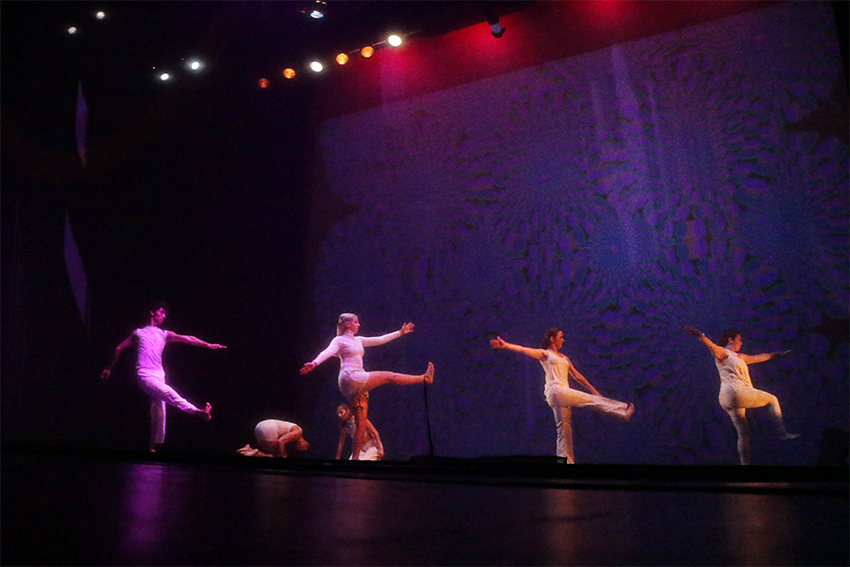As the lights dim in the Payne Theater this weekend, colorful effects will illuminate the stage as dancers with motion sensing sound technology bring the theater to life.
On May 5 and 6 at 7:30 p.m., the department of theater and dance will work with the Butler school of music and the integrated music studies program to bring to life the Ears, Eyes + Feet production that will showcase innovative creations by interdisciplinary teams. The event will bring together electronic music compositions, choreography and visual arts to create a modern performance that combines technology with art.
“It is a very eclectic group,” said Erica Gionfriddo, theater and dance lecturer and director for the event. “It is a lot of moving parts and their goal is to create a cohesive
performance piece that integrates dance, lighting, music and projection. It is a unique project and a lot of schools don’t offer that kind of experience for
students, but it is definitely the trend in the contemporary performance world beyond academia.”
School of music professor Russell Pinkston said the event evolved from an electronic music showcase called EARS that was founded in the mid 1980s and now includes dance and lighting designers. As the collaborations with dance increased over the nest decade, it came to be known as Ears and Feet and as video elements began to be included it became Ears, Eyes + Feet.
Now, Gionfriddo said it has become a yearly tradition in which dance students, either for a class or voluntarily, join forces with music students and visual designers to create an innovative show that integrates the diverse elements of their respective fields.
“Every piece you see will include dance and music composition and production in some form (but)
everyone has interpreted that differently,“ Gionfriddo said. “They all have different concepts for each piece that you will see, but all of them are working towards the
successful integration of those elements.”
Natural sciences junior Victoria Murillo, who served as one of the student choreographers, said participating has allowed her to find modern ways to apply technology to the traditional elements of choreography.
Murillo said for this year’s event she will be using a new method of motion reading technology, called e-motion. It will be worn by the dancers, and will produce sound based off the movement of their body.
“(They) are these little sensors that pick up the paces the dancers are doing,” Murillo said. “(They) create a high pitch tone or a low pitch tone depending on where the limbs of the dancers are. So, when I created the
choreography it was experimenting with how the tones sound and how it worked with the bedding track that the composer had pre-composed.”
Pinkston said learning to use technology with art and working together to understanding each other’s fields has been one of the biggest challenges the students have had to overcome.
“The process of collaborating with artists from other disciplines is something that is extremely beneficial educationally,” Pinkston said. “In a mixed media art form you have to work with other artists in different
disciplines. You have to learn to communicate, modify your vision for your piece with the vision of the other person.”
For Gionfriddo, the benefit of being able to come together and put their abilities to practice in a real-world scenario outweighs the challenges.
“That is always a scary moment for a young designer, not knowing how that is going to translate,” Gionfriddo said. “But, so far everyone is very pleased with how the elements are going to be combine.”















